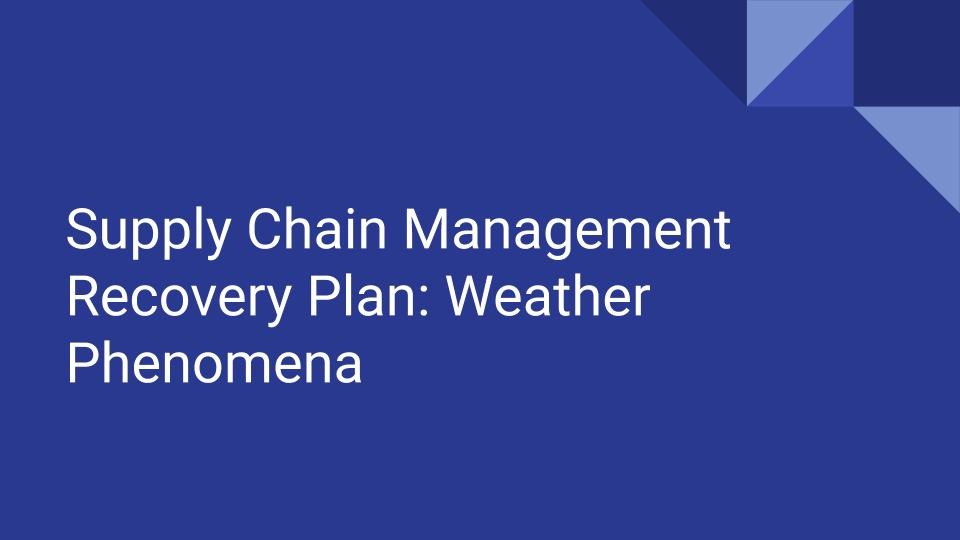
We live in an interesting world that is filled with stability, and the occasional surprise of external phenomena that are designed to induce change in our awareness and operations. External phenomena are becoming more and more prevalent with time. With time, we all realize that we are all prone to external weather phenomena such as hurricanes, earthquakes, forest fires and tidal waves. The presence of these phenomena, is just part of the territory of living on the planet Earth.
The beauty of understanding the natural elements of the earth is knowing that these occurrences will occur, and as an organization, understand how best to actually mitigate against such occurrences when they do occur. The greatest insurance policy is a plan. Disruption is some way or the other is actually inevitable, and organizations who embrace, and are prepared for these occurrences are actually better off than their counterparts who are not prepared.
As time progresses, and disasters occur, it is important for organizations to take the time to actually restore. Restoration as a process actually requires organizations to have the resources to do this. Getting things going again, is critical to long term success. The organizational recovery plan is the critical document that will support this change. Disaster preparedness enables an organization to have a clear flow to restoration. The supply chain and its robustness is the key to accomplishing this objective.
While Disaster Recovery plans often have an administrative feeling, when the occurrence actually occurs, they will be much appreciated. It is better to be safe than to be sorry. After the advent of the current pandemic that ravaged many supply chains, many organizations are actually more aware of the importance of a critical supply chain Recovery Plan. The disruption of the supply chain is something that takes place via varying root causes, and knowing how to react with each scenario is the key to success.
Organizational disruption to raw materials delivery, goods processing, and goods delivery will affect up to millions of individuals. As a result, it is important for key attention to be paid to a suitable Recovery Plan. System complications can be impacted by the nature of supply chains.
ITEMS TO INCLUDE IN A SUPPLY CHAIN DISASTER RECOVERY PLAN
Disaster Recovery is a complex endeavor that has many elements including: People, Communications, Logistics, Inventory, IT, Capacity Planning. There are critical components of the recovery plan that can be incorporated into the recovery plan in order to ensure that the organization will thrive during uncertain times. These elements can focus on:
People: It is important for organizations to keep their people at the forefront of their success. People are the ones who linchpin the system. As a result, it is important to ensure that people’s safety and health is kept as the number one priority.
Real Time Restoration: A realistic plan for restoration is one that involves the plan to start at a baseline production capacity, and to transition to a scale up of production operations. Being able to see the entire supply chain, will enable organizations to understand their capacity, and forecast supply and delivery to customers.
Communication Strategy: A great plan requires hands in order to achieve them. With the means to let people understand how the system will be recovered, an organization will be able to understand its current condition, target condition, and how to get there. There are various individuals that are involved in the business including stakeholders. Having everyone on the same page, will ensure that people are able to achieve the organizational objective.
Detailed Supply Chain Mapping: Understanding the state of the supply chain is key to organizational success. The Disaster Recovery plan is to include details of a complete map of the supply chain from supplier to customer. Define all the elements, identify points of weakness, and incorporate the solutions in case there’s a discrepancy. Create multiple scenarios in your planning process, and enable your supply chain to be able to meet those conditions. Incorporating these scenarios will enable your supply to be guaranteed during the restoration process. If a supplier cannot meet your needs, you will have an alternative plan that will be accomplished.
IT System Availability: As organizations encounter system disruptions via several root causes, one of the key means of indication of a company’s health is the upkeep of the website. If the organization has E commerce capability, it will be important to ensure that the site is up. Implementing storage solutions such as cloud computing, having backup hardware and data centres, will enable the organization to sustain its online presence. Additionally, with IT and the 5G infrastructure, clear views of the supply chain can be seen, and acted on.
Inventory: During the recovery process, minimal inventory will be important. What an organization will require, is the process of ensuring that minimal resources are tied into inventory. Inventory is cost intensive, and organizations are better off knowing that they are able to produce what they have in stock, and replace only what is consumed. Excess inventory will place the organization in a situation where their cash will be affected. Having less inventory, will free up cash, and keep the organization agile.
In summary, while disasters are unpredictable, having a Supply Chain Disaster Recovery Plan is the key to restoration when they actually do. The current pandemic has made Recovery Plans a must.
